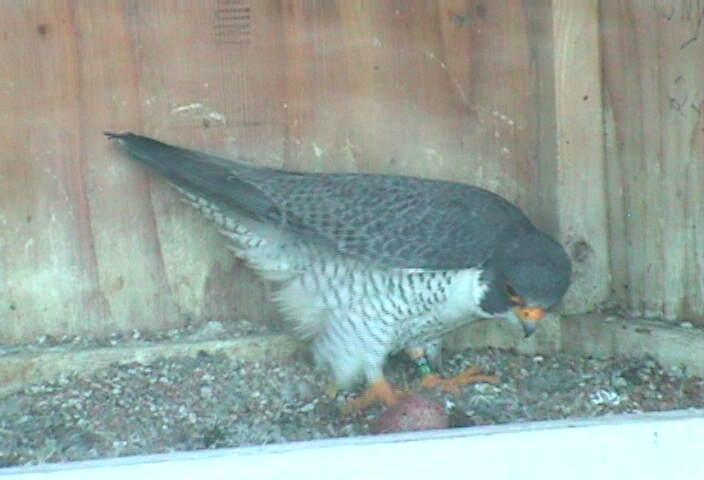
Xplor reconnects kids to nature and helps them find adventure in their own backyard. Free to residents of Missouri.


































Stay in Touch with MDC news, newsletters, events, and manage your subscription

Xplor reconnects kids to nature and helps them find adventure in their own backyard. Free to residents of Missouri.

A monthly publication about conservation in Missouri. Started in 1938, the printed magazine is free to residents of Missouri.


ST. LOUIS, Mo. -- Through a cooperative effort among the Missouri Department of Conservation (MDC), Ameren Missouri and the World Bird Sanctuary (WBS), the public can get a bird’s-eye view of peregrine falcons raising chicks in a nest box at Ameren’s Sioux Energy Center in St. Louis. A camera near the birds’ nest box provides video feeds to each organization’s website. MDC and WBS staff are providing commentary on what’s happening.
The nest can be viewed on MDC’s website at mdc.mo.gov/node/16934, on Ameren’s website at AmerenMissouri.com/FalconWatch and on the WBS website at worldbirdsanctuary.org. The camera is live for viewing from 7 a.m. until 8 p.m. (CDT) seven days a week.
“This peregrine project will help Missourians discover nature right in the nest of these amazing raptors,” said MDC Director Bob Ziehmer. “The project illustrates the power of partnerships between private and public sector organizations to help conserve native wildlife.”
Ameren staff installed the webcam at the nest site in early January. Peregrine falcons have been seen at Sioux Energy center since early 2011, with this year’s nesting activities first spotted in the beginning of February. MDC and WBS researchers have been observing the birds’ activities and are posting observations on the websites as updates warrant.
According to WBS Director Jeff Meshach, the female peregrine falcon laid her first egg on Monday, March 12. She is expected to lay a total clutch of four to five eggs, with an additional egg laid every two to three days. The eggs are expected to hatch around April 12. The male falcon will bring food to the female and take his turns incubating the eggs so the female can feed and preen her feathers.
Meshach added that the peregrine falcon has made an incredible comeback from the brink of extinction.
“What we will see at Ameren’s Sioux Energy Center nest box is the fruit of tens of thousands of hours of labor to make the peregrine falcon a common sight again,” Meshach said. “There is always something to learn about any of our world's birds and animals. Our camera will provide a window into the nesting life of the world's fastest creature, and I personally will find it hard to get any desk work done as I watch my favorite of the world's bird species.”
A WBS reintroduction program has placed more than 80 captive-hatched peregrines back into Missouri's wild, and WBS continues to band chicks produced by up to five pairs of wild peregrine falcon parents in the greater St. Louis area each year.
Ameren Missouri’s Senior Vice President of Customer Operations Richard Mark added that Ameren and WBS have worked on wildlife conservation projects for more than 25 years. Efforts include providing suitable habitat for songbirds through nesting boxes attached to Ameren Missouri transmission towers. The company has spent more than $300,000 to install nesting boxes and nesting-tower material.
“The peregrine falcon project has been one of the most exciting projects we’ve been involved in,” Mark said. “This year, via video, we’re able to share with visitors to our website the amazing lives these birds lead in raising their young. It’s part of our ongoing commitment to being responsible stewards of the environment.”
Considered the world’s fastest animal, peregrine falcons have been clocked diving at 261 mph. For more information on peregrine falcons, visit MDC online at mdc.mo.gov.